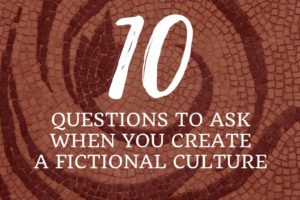As a child who read over 500 books before she was thirteen (my school curriculum was very reading intensive), there are only a handful of books that stand out in full color among the wash of other stories. Of these books, I still remember very specific moments—and sometimes, even a quote.
The following three moments still spring to my mind frequently. They fascinated me as a child, and they still fascinate me as a person, a reader, and a writer today.
(Disclaimer: I don’t own all these books any more, so I can’t verify that these are exact quotes.)
3. “What do you see in the shadow?” / “Black.”/ “I see purples, and blues, and greens.” – I, Juan de Pereja by Elizabeth Borton de Treviño
In I, Juan de Pereja, the main character becomes a slave to a painter. As the painter begins to go blind, the slave learns to help him paint, eventually even holding his hand to steady the paintbrush. I remember being fascinated by one scene in which the characters look at a curtain and describe what they see, and what they see is almost entirely different.
This is universally true about characters, but sometimes can be lost when you’re just trying to get your story across. People who are experts at something see, hear, and feel things the rest of us never notice. Likewise, people who are outsiders will see things differently than a native. It’s worth while to spend some time thinking about what your character is an expert at, and what he/she is a foreigner to.
Some examples from my own experience:
- A physical therapist once looked at me and said, “The way you hold your head shows that your body thinks straight-forward is to the right.” I never knew the pain in my neck had altered how I perceived direction.
- A hand specialist once ran her fingers over my thumb, closed her eyes and said, “You have arthritis here.” It hadn’t even shown up on x-rays yet.
- A good photographer is always watching light, and can read time by the way the sun shines through leaves (I used to do this when I was taking people on photoshoots multiple times a week).
- An artist going on a walk notices the texture, reflection and composition of his or her surroundings.
2. “She had the rare ability to cry silently.” – The Ides of April by Mary Ray
In The Ides of April, a murder is committed in Rome and a slave is the suspected murderer. A freeman teams up to help him solve the mystery. During a touching scene, the freeman goes to the prison where the slave’s mom is and, warning her to be quiet, lets her know that her son is alive. She begins to cry, and the narrator remarks that she was a rare woman who could cry without making a sound.
Sometimes the most powerful emotion (and least melodramatic) is a controlled emotion. While violent and untamed outbursts can be the way to go, it’s also very revealing to watch a character contain his/her joy or grief.
I’ve just watched the first episode of Broadchurch (which is FANTASTIC) and the subject matter was very tragic. While the characters go through a realistic spiral of emotions, certain trends come out. The mother of the victim cries loudly and bites her hand and shakes. The assistant detective, also a woman, cries without moving or making a sound, with her lips pressed together and her chin up. Both ways show their characters, and both ways show grief.
Exploring a range in how your characters react to pain and to happiness through crying (or suppressed crying/emotion) can give your event more gravity. Please don’t go to a cliched “a single tear rolled down her cheek.” But the use of a carefully precise action can be a powerful a way into the character him/herself.
1. “You make him human.” – The Second Mrs. Gioconda by E. L. Konigsburg
The Second Mrs. Gioconda follows the story of a boy/young man who’s a servant to Leonardo, but can’t take anything seriously and mostly ends up goofing around. At one point, the young man remarks to a female character that he doesn’t even know why Leonardo still keeps him on. She looks at him and says, “You make Leonardo human.”
Someday I hope to write a post about all the reasons secondary characters (and Hufflepuffs in general) make main characters awesome. But here it is in sum: These characters make people human.
Look at Sherlock Holmes and John Watson. Sherlock is a genius. Nothing gets through his skin, nothing unhinges him—until he befriends John. John helps Sherlock become more human, more understanding. In the books, John literally is the one mediating between Sherlock and people (the readers). Being human means that Sherlock is way more interesting to read about or watch on screen. But is also means Sherlock has a heart, which is a vulnerability.
In BBC’s Sherlock, the finale of Season 1 features this awesome exchange:
Moriarty: I will burn… the heart out of you.
Sherlock: I’ve been reliably informed that I don’t have one.
Moriarty: Oh, but we both know that’s not quite true.
(Watch the full exchange here—the change Sherlock undergoes at minute 1:27 is particularly interesting.)
Humanizing characters like John Watson are, I think, what make big, invincible, or famous characters intriguing and vulnerable. That’s one reason superheroes get sidekicks or human romantic interests—we need someone more like us to make the heroes more human.
Writing Prompts:
- Who in your story is untouchable? Who can make them vulnerable—make them human?
- What mannerisms do your characters have when they are faced with tragedy?
- Make a list of three things your character is an expert at and three things your character is a stranger to.
- Describe the same room from two different characters’ perspectives. What do they see differently? What does that say about them?
What quotes or moments stand out to you from books you read a long time ago? Why do you think those particular scenes stayed with you?


















